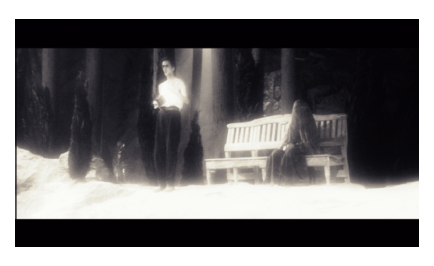It was serendipitous that The Piano Tuner of Earthquakes, the new movie by the Brothers Quay, premiered in London the same week in February as a much-touted Tate Britain exhibition titled “Gothic Nightmares: Fuseli, Blake and the Romantic Imagination.” The relentless pacing of most current movies, so-called art house and genre alike, does not prepare a modern moviegoer for the Quays’ unfamiliar storytelling rhythms, their puzzling digressions and (to some) maddeningly disconnected narratives. But the Tate’s “Phantasmagoria” room, with its recreation of the fantastical visions of eighteenth-century magic-lantern shows, was a perfect decompression chamber for the film.
Phantasmagoria is Quay country.
Timothy and Stephen Quay, American avant garde filmmakers who have made England their home since the 1970s, aren’t really goths, old or new. Their work doesn’t aim to inspire shock or horror. Nor is it surreal, though it is often labeled so and draws considerable inspiration from that school (most notably, in Piano Tuner, automata are blood relations, to put it one way, of the mad inventor Canterel’s allegorical machines in Raymond Roussel’s novel Locus Solus). It’s not postmodern, either. The Quays’ sensibility is, rather, deeply immersed in Romantic-Symbolist imagery, the still lake waters of Arnold Böcklin’s painting Island of the Dead that dominates Piano Tuner’s last scenes.
At first glance, the creative arc the Brothers Q have traversed in their career shows the kind of quantifiable progress pleasing to any Social Darwinist of the arts. Starting with very short animated puppetry films—vignettes in the spirit of the Czech master Jan Svankmajer—they moved to longer animation in the notable Street of Crocodiles (1986), from the book of stories of the same name by the Polish Jewish writer Bruno Schulz, then to their first feature film (with real human actors!), Institute Benjamenta (1995), based on Robert Walser’s novella of abjection set in a school for servants. The Piano Tuner of Earthquakes, the Quays’ second feature film, is their first to be shot in color—the muted, dreamy, diffuse watercolors of a submerged world. It’s also (despite all the overlays, references, and stated debts to Verne and Hoffmann) their first “stand-alone” script. And it is a love story, not the Brothers’ usual territory at all.
So do we find, then, in the manner of certain writers in the Quays’ adopted country who have transitioned from minor-key gothic to “big,” socially engaged novels, that with the wider canvas comes the long-awaited move out of the shadows into the sunlight of mainstream human concerns? Alas, like Blake and other true Romantic originals, the Brothers Quay are not likely to seek such easy redemption, and the official label “Accessible”...
You have reached your article limit
Sign up for a digital subscription and continue reading all new issues, plus our entire archives, for just $1.50/month.
Already a subscriber? Sign in





